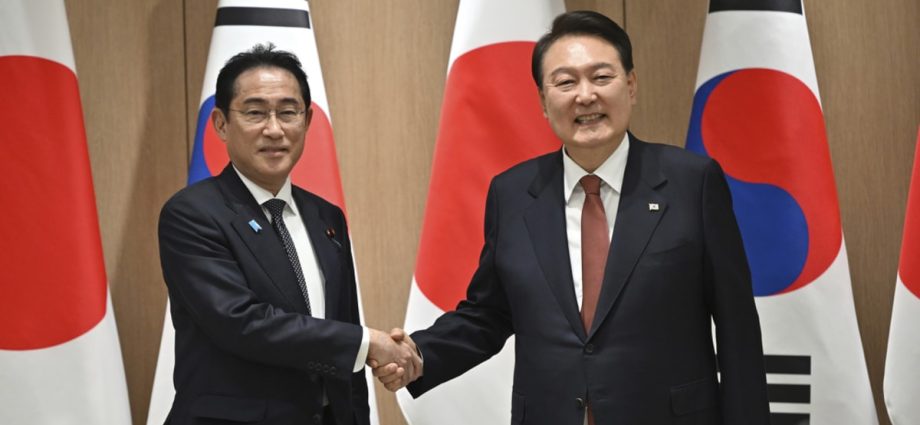
RAPPROCHMENT MUST OUTLAST CURRENT LEADERS
Though Yoon deserves the plaudits that will accompany a successful summit (at least in Tokyo and Washington, if not at home), success will, ironically, only be confirmed if this thaw can outlast him. The leaders are all too aware of what tends to happen historically: A change of leadership in Seoul, a return to a focus on prior feuds and more distrust on both sides.
That’s what happened to the “final and irreversible” 2015 agreement on comfort women, a euphemism for those trafficked to army brothels during Imperial Japan’s occupation, which the government of Yoon’s predecessor, Moon Jae-in, swiftly abandoned. It gummed up the gears of relations for years, with the nations engaging in tit-for-tat trade disputes.
Biden’s presence has helped provide a backdrop of stability that is a marked difference to his predecessor’s haphazard foreign policy in Asia. But there’s a real chance that Donald Trump might return to the White House, bringing one or both of his “fire and fury” or “love letter” approaches to North Korean leader Kim Jong Un.
Yoon’s presidency runs until 2027, but he’s limited to this one term; and though the Japanese public admires how Kishida has handled the South Korea matter, his domestic support is flagging. While personal ties between leaders are important, this relationship must survive once the three men have departed office.
BALANCING CHINA AND US
Despite what Beijing’s mouthpieces might say, there’s no talk of forming an Asian North Atlantic Treaty Organization (NATO) just yet.
The steps likely to be announced this weekend are tamer, such as making the summit an annual event and setting up a three-way hotline between Japan, South Korea and the US.

